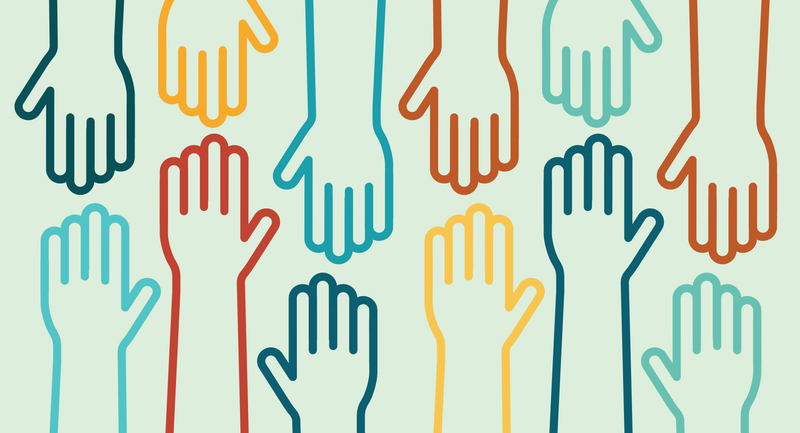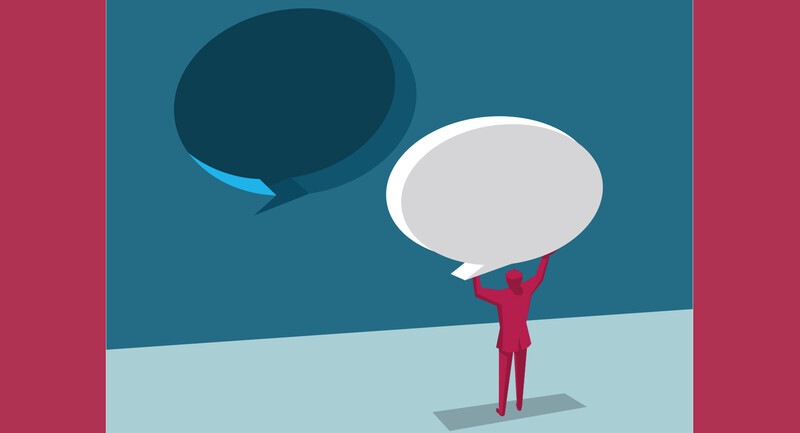Creativity—along with critical thinking, collaborating, and communicating—is now seen as an essential skill to teach in schools. Creative thinking is defined as the "interaction among aptitude, process, and environment by which an individual or group produces a perceptible product that is both novel and useful as defined within a social context" (Plucker, Beghetto, & Dow, 2004, p. 90). Since we are seeing new, complex problems in society that we haven't encountered before, we need new problem-solving strategies to tackle them. Creative thinking allows children to generate more potential solutions, develop enhanced critical thinking to evaluate those ideas, and communicate those ideas effectively (Dow, 2017). But while more and more teachers recognize the importance of fostering creative thinking in their students, there are still prevailing misconceptions that surround creativity and how to correctly embed creative thinking within lesson plans in a pragmatic manner. Recent research findings on the role of neurotransmitters, collaboration, and critical thinking on increasing creativity can give educators more clarity and insight.
The Creative Brain Regions
Perhaps the main neurological misunderstanding about learning and creativity is that creativity resides in a specific hemisphere of the brain. This yielded the popular idea of "right-brain" vs. "left-brain" thinking, where the right side of the brain is for artistic and creative abilities and the left side is for science and math abilities. This fallacy of localization is continually endorsed by popular brain hemisphere quizzes on social media, memes, and invalid educational paradigms.
But as extensive brain research has proven, the dichotomy of left- and right-brain thinking is too simplistic. Creativity requires a complex interplay of the entire brain (Beaty, Seli, & Schacter, 2019). A variety of brain imaging techniques have shown us that creativity involves an active interplay of all regions of the brain. Procedures such as an EEG (electroencephalogram), which uses small, harmless electrodes secured to the scalp with gel and tape, can measure the electrical signals of brain wave patterns. Other procedures, such as a PET (positron emission tomography) scan or fMRI (functional magnetic resonance imaging) can detect blood flow to regions of the brain when an individual is performing a creative task, imagining a scenario, or solving a problem. Brain research using contemporary imaging has led researchers to believe that there are three brain networks interacting when we perform a creative task: the Imagination Network, the Central Executive Network, and the Salience Network (Beaty et al., 2015; Koontz, 2019).
The Imagination Network allows children to daydream, brainstorm, and feel empathy and a connection toward others. This draws on the parietal and occipital lobes, which assist our processing of sensory information, and the prefrontal cortex, which assists in making decisions and in social interactions. The Central Executive Network allows children to focus their attention on a complex task and make decisions. It draws on the parietal lobes and the frontal lobes, which help with problem solving and recall. Finally, the Salience Network allows children to switch between the Imagination Network and the Central Executive Network while screening out irrelevant information and selecting which thought, sense, or process to pay attention to in order to complete a task. The Salience Network uses the frontal lobes and the temporal lobes, which assist in speech and language processing. The ease and speed at which these three networks interact is what results in a creative idea or solution (Beaty et al., 2018).
The Creative Neurotransmitters
In addition to our current knowledge of brain regions, we now know that neurotransmitters also play a major role in creative thinking. Within the brain, there are more than 100 different types of neurotransmitters. These chemical messengers transmit a signal across the synapse to another neuron, muscle cell, or gland cell to evoke a function of the nervous system or body. Despite the multitudes of neurotransmitters within the body, three are consistently shown to interplay with creative behavior: serotonin, dopamine, and the neuropeptide oxytocin. And while not a neurotransmitter, the stress hormone cortisol also interacts with oxytocin to impact creative thinking.
Serotonin is responsible for mood regulation and can impact whether a child feels calm or anxious. In one study, researchers examined creative fluency and originality by inducing a mood state of anger, sadness, happiness, or relaxation, and then asked the participants to brainstorm ways to improve teaching at their school (Baas, De Dreu, & Nijstad, 2008). While negative and neutral moods evoked similar creative output, when the participants experienced positive moods, they generated a greater quantity of ideas, and those ideas tended to be more original.
Dopamine can also influence an individual's mood, particularly the degree of focus or engagement in an activity. Dopamine is triggered by surprising or unexpected events that capture our attention. When a high amount of dopamine is released, our cognitive inhibition can be reduced, and more creative ideas can flow. In connection with efforts to promote creative thinking and foster imagination, dopamine has been found to increase not only the quantity and originality of ideas, but also flexibility in thinking (De Manzano et al., 2010).
Oxytocin, known as the "love hormone," is a neuropeptide that facilitates social attachment and trust among group members (Zak, Stanton, & Ahmadi, 2007). Collaborating in groups serves two biological purposes: as we bond with group members, our oxytocin peaks and the stress hormone cortisol decreases. Key creative behaviors such as novelty seeking, exploration, and flexibility in thinking have been found to be positively associated with higher rates of oxytocin and lower rates of cortisol.
Although not a neurotransmitter, the glucocorticoid cortisol is activated by stress, perceived threats, or decreases in self-esteem and can limit creative output. Commonly known as the "stress hormone," cortisol spikes during anxious or fearful situations and triggers the fight-or-flight response. If these situations are not resolved, the brain becomes continually saturated in cortisol and can change permanently. Some symptoms result in behavioral changes that can manifest in the classroom as irritability, impaired concentration, inability to focus, or a reduction in energy levels (Yeh et al., 2015).
In the Creativity Research Lab, a clinic I direct at Christopher Newport University in Virginia, we recently determined how collaboration affects both oxytocin and cortisol levels. We gathered saliva samples before and after students engaged in the popular team-building Spaghetti Tower Marshmallow Challenge. In this challenge, the students spent 20 minutes using only uncooked spaghetti, tape, and string to try to build the tallest, freestanding structure that can support a marshmallow. We measured the students' oxytocin and cortisol levels from their saliva and found that during the challenge, their oxytocin significantly increased, while their cortisol levels decreased, possibly because students enjoyed engaging with group members on a creative problem-solving activity (Dow & Lipotova, 2019).
The Creative Classroom
Our research suggests that, with the right balance of serotonin, dopamine, oxytocin, and cortisol, a child can be calm, focused, and engaged in learning. Below are some common learning activities and procedures that are drawn from neuroscience research to promote creativity and collaboration in the classroom.
Do group work with a goal: Working within a group can raise oxytocin and reduce cortisol, to not only foster a sense of community, but also to promote creative and critical thinking. While group work is a cornerstone in education, it is only successful when collaboration is rewarded while students are working toward a common goal. Social-learning can activate neurotransmitters responsible for motivation and brain regions that facilitate recall (Jensen, 2008). One popular social-learning technique is the jigsaw method (Aronson & Goode, 1980), in which children work cooperatively to learn an entire assignment. First an assignment is broken down into five or six segments. Students are assigned, in small groups, to learn one of the segments, thus becoming the "experts" on that segment.
The students then move into "jigsaw" groups that contain at least one representative from each of the expert groups, so that all of the segments of the assignment come together. The students take turns teaching their segment of the assignment to their jigsaw group members. Every child is responsible for learning, not only their unique segment in the expert group, but also the information shared from other experts. By fostering cooperative learning and allowing mastery over content, subsequent dopamine release results in increased motivation and higher rates of retention and learning (Pink, 2011).
Reduce stress and encourage risk taking: Some stress can foster creativity by increasing motivation. However, if a child experiences a high amount of stress, it can negatively impact recall, critical thinking, and creativity. A stressed child will struggle to maintain attention, discriminate between irrelevant and relevant tasks, and process information. While the root cause of the stressor should be addressed and resolved, there are some instructional techniques that have been shown to reduce stress and test anxiety among students while promoting creative and critical thinking.
One technique is brainstorming, which focuses on producing a quantity of ideas rather than quality. Impractical ideas, bad ideas, and wrong ideas are not only permitted but encouraged. "Sloppy copies" is another policy that reduces stress by freeing students from the concern of a perfect final draft and allowing them to make mistakes and submit drafts with crossed-off sections or wrinkles on their papers. A revise-and-resubmit policy allows students to take a risk with their ideas or use an unexpected strategy, knowing they can redo the assignment if it results in a lower grade than desired.
By creating a climate that accepts errors as part of the learning process and allows risk taking, teachers help students feel more comfortable testing new ideas. In a supportive and socially engaged environment, not only are cortisol rates reduced, but the prefrontal cortex is engaged, and dopamine, serotonin, and oxytocin rates are increased, thus creating an optimal environment for promoting creative thinking (Beaty et al., 2018).
Mix it up: In addition to cooperative activities in a safe climate of learning, adding in novel approaches such as humor, surprise, role-playing, or debates can result in an increase in dopamine, which then enhances the recall of information. Try "sorting" students into groups à la Harry Potter to promote group cooperation and support, or use the SCAMPER brainstorming technique (Substitute, Combine, Adapt, Modify, Put it to another use, Eliminate, and Reverse) to generate new ideas. Promote good listening with the fishbowl technique, where students take turns being in either an inner circle, engaged in a group discussion, or an outer circle, where they listen and take notes.
These dynamic, cooperative techniques serve to directly provide engaging sensory stimulation that requires students to socially interact, make decisions, and solve problems. This activates the entire brain and stimulates the Imagination Network, the Central Executive, and the Salience Network (Beaty, Seli, & Schacter, 2019; Koontz, 2019).
The Complexity of Creativity
Creativity is a multifaceted construct that is not easily understood. But learning about the neurological underpinnings of creative thinking can help educators not only become more creative themselves, but also value the complex nature of creativity, which will ultimately build a safe, fun, and thriving classroom environment.
Reflect & Discuss
➛ What new insights did the authors give you into the brain and creativity?
➛ How might these insights influence your teaching or your support of teachers?
➛ Does your school or district do enough to support creative learning?









